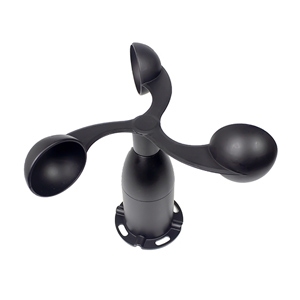How to Use a Wind Anemometer?
Wed, Jun 01 by ATO.com
ATO anemometers are used in health supervision, environmental monitoring, health and epidemic prevention, university academies, food safety, industrial pollution, heavy metal dyes, potions, chemicals, beverages, bacteria, sewage, pulp, pharmaceuticals, fermentation, electroplating, drinking water production workshops, planting, breeding and fishing sites. Here's how to use an wind anemometer and its precautions:

Anemometer using steps
- Before use, observe whether the pointer of the meter points to the zero point. If there is any deviation, adjust the mechanical adjustment screw of the meter lightly to make the pointer return to the zero point.
- Set the calibration switch of the wind anemometer to the OFF position.
- Insert the measuring rod plug into the socket, place the measuring rod vertically upward, press the screw plug to seal the probe, put the "calibration switch" at the full-scale position, and slowly adjust the "full-scale adjustment" knob, so that the meter pointer points at full scale. degree position.
- Set the "calibration switch" to "zero position", and slowly adjust the two knobs of "coarse adjustment" and "fine adjustment", so that the pointer of the meter points to the zero position
- After the above steps, gently pull the screw plug of the speed meter to expose the probe of the measuring rod (the length can be selected as needed) and make the red dot on the probe face the wind direction. Find out the measured wind speed.
- After measuring for a few minutes (about 10 minutes), the above steps 3 and 4 must be repeated once to standardize the current in the meter.
- After the measurement, the anemometer "correction switch" should be placed in the off position.
Precautions:
- It is forbidden to use the ATO anemometer in a flammable gas environment.
- It is forbidden to put the wind meter probe inflammable gas. Otherwise, fire or explosion may result.
- Do not disassemble or modify the anemometer, it may cause electric shock or fire.
- Please use the anemometer correctly according to the requirements of the instruction manual. Improper use may result in electric shock, fire and sensor damage.
- During use, if the wind anemometer emits an abnormal smell, sound or smoke, or liquid flows the anemometer, please shut down immediately and remove the battery. Otherwise, there is a risk of electric shock, fire, and damage to the anemometer.
- Do not expose the probe and the anemometer body to rain, which may have the risk of electric shock, fire and personal injury.
- Do not touch the sensor part inside the probe.
- When the wind anemometer is not used for a long time, please remove the internal battery.
- Do not place the anemometer in a place with high temperature, high humidity, dust and direct sunlight, which will cause damage to the internal components or deterioration of the performance of the anemometer.
- Do not wipe the anemometer with volatile liquids. When there are stains on the surface of the anemometer, they can be wiped with a soft fabric and neutral detergent.
- Do not drop or stress the anemometer.
- Do not touch the sensor part of the probe when the wind speed meter is charged, otherwise, it will affect the measurement results or cause damage to the internal circuit of the anemometer.

